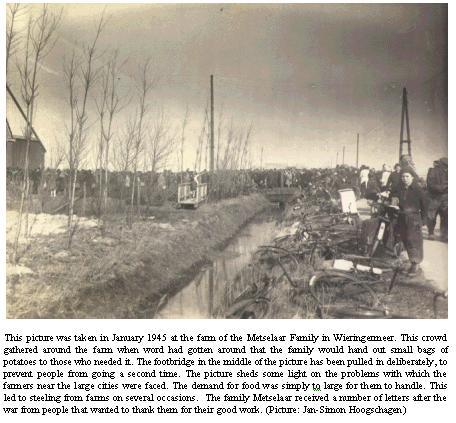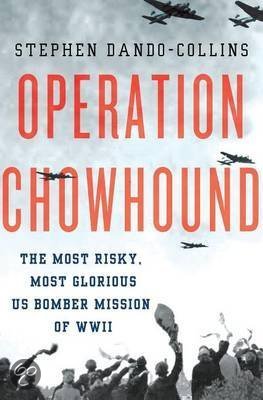Hungerwinter
The elderly people and the children suffered more than the stronger adults. The death rate under children was extremely high that winter. Some people had the luck that they worked for large companies. These companies often did everything in their power to get their hands on food supplies with which they upgraded the meager rations of their workers. These companies had more possibilities to bring food in from outside the big cities than the ordinary people. People that had no means to enlarge their rations had to eat sugar beets and in a number of cases even tulip bowls.

The German terror made living conditions worse than before throughout the winter.Razzia's in which whole streets were sealed of and searched for all kinds of illegal activities became more common practice than an exception. All men that had refused to report for work in Germany had to fear being arrested. The Jews that still hadn't been transported were hidden by Dutch families, risking their own lives. The railroad strike had extended the number of people in hideout. All these people had to receive false rations cards, which forced the resistance workers into robbing distribution centers. The struggle between the resistance fighters and the German oppressors got much worse than it had been in earlier years of the occupation. Dutch collaborators that formed a thread to the resistance were liquidated. Sabotage actions were committed. The German reactions became more violent, people were picked up from the streets and were shot as represaille.
 A tragic highpoint in this German terror was the revenge for an ambush on the staffcar of the head of the Sigherheidsdienst (SD). Rauter himself was wounded in the ambush while others in the car were killed. As revenge the Germans drove all people from the village Putten and set fire to the village. All men were transported to slave labor camps in Germany. Not many survived. On top of this a hundred resistance workers who had fallen in German hands some time before where taken to the site of the ambush and were shot on the spot.
A tragic highpoint in this German terror was the revenge for an ambush on the staffcar of the head of the Sigherheidsdienst (SD). Rauter himself was wounded in the ambush while others in the car were killed. As revenge the Germans drove all people from the village Putten and set fire to the village. All men were transported to slave labor camps in Germany. Not many survived. On top of this a hundred resistance workers who had fallen in German hands some time before where taken to the site of the ambush and were shot on the spot.
The people in occupied Holland didn't only have to live with hunger, fear was also present all around.
 Author: Hans Onderwater This book by Hans Onderwater is the standard work about the food drop missions over Occupied Holland with a bundle of information, photos and first hand accounts of the hunger winter and the food drop missions.
Author: Hans Onderwater This book by Hans Onderwater is the standard work about the food drop missions over Occupied Holland with a bundle of information, photos and first hand accounts of the hunger winter and the food drop missions.